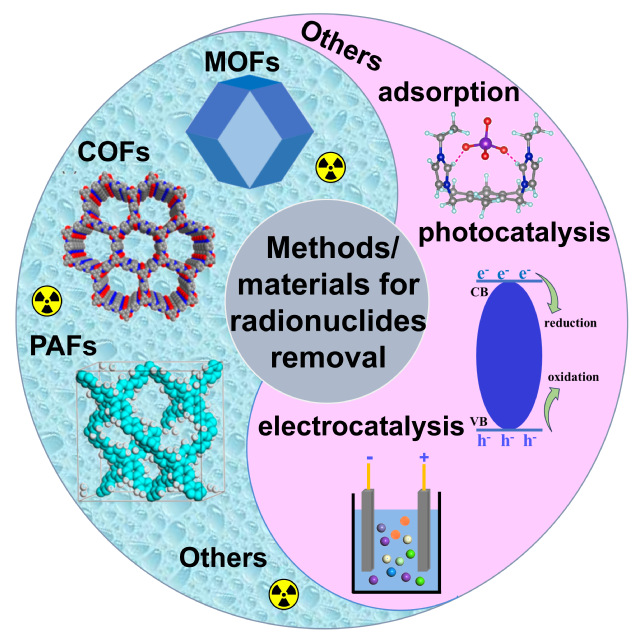
Highlights
– Japan recently announced the plan to discharge over 1.2 million tons of radioactive water into the Pacific Ocean.
– Radionuclide-contaminated water will pose an enormous threat to the global ecosystems and human health.
– Advanced porous material and emerging technologies applied to radionuclides removal have been summarized.
– Higher requirements for the design of nanomaterials and technologies applied to the practical radionuclide removal are proposed.
Abstract: Japan recently announced the plan to discharge over 1.2 million tons of radioactive water into the Pacific Ocean, which contained hazardous radionuclides such as 60Co, 90Sr, 125Sb, 129I, 3H, 137Cs, and 99TcO4−, etc. The contaminated water will pose an enormous threat to global ecosystems and human health. Developing materials and technologies for efficient radionuclide removal is highly desirable and arduous because of the extreme conditions, including super acidity or alkalinity, high ionic strength, and strong ionizing radiation. Recently, advanced porous material, such as porous POPs, MOFs, COFs, PAFs, etc., has shown promise of improved separation of radionuclides due to their intrinsic structural advantages. Furthermore, emerging technologies applied to radionuclide removal have also been summarized. In order to better deal with radionuclide contamination, higher requirements for the design of nanomaterials and technologies applied to practical radionuclide removal are proposed. Finally, we call for comprehensive implementation of strategies and strengthened cooperation to mitigate the harm caused by radioactive contamination to oceans, atmosphere, soil, and human health.
Keywords: Radioactive water; Radionuclides removal; Advanced porous materials; Emerging technologies
DOI: 10.1016/j.eehl.2023.09.001
Authors: Xiaolu Liu, Muliang Xiao, Yang Li, Zhongshan Chen, Hui Yang, Xiangke Wang*